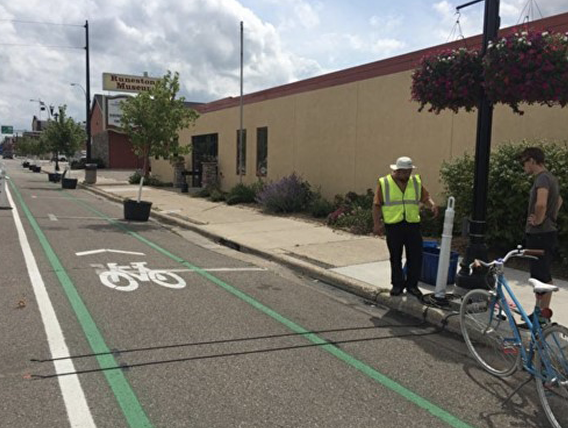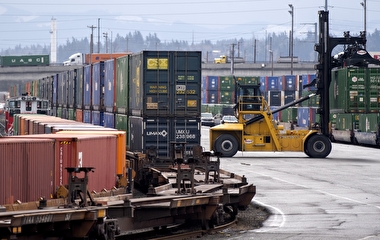
Complete Streets policies encourage the design of a safe and functional transportation system for all users. However, in small cities where Minnesota’s highways often serve as commercial main streets, the impact of these road reconstruction projects can sometimes be challenging for businesses.
In a MnDOT-funded project, U of M researchers investigated the economic effects of Complete Streets projects on small cities and developed evaluation metrics to assess and communicate these impacts. (Elements such as sidewalks, bike lanes, and pedestrian crossings are commonly associated with Complete Streets.)
Other studies have looked at metropolitan areas, but smaller communities and their businesses have largely been unexplored. “Perceptions of these projects vary widely,” says Camila Fonseca Sarmiento, director of fiscal research with the Humphrey School’s Institute for Urban and Regional Infrastructure Finance and the project’s principal investigator.
Complete Streets projects are thought to add to a city’s desirability and may produce broad economic benefits. However, the downsides during reconstruction—such as loss of vehicle, pedestrian, and parking access; utility shutoffs; and increased noise and dirt—cause community concern and may affect businesses in the short term.
The researchers began by reviewing the Complete Streets approach and its implementation in Minnesota. They also explored the community benefits and impacts of road reconstruction projects more generally.
Next, the team developed nine case studies of Complete Streets reconstructions in a variety of smaller Minnesota cities. They gathered data about the perceived challenges or benefits for business and the effects of policies and strategies to reduce construction impacts before, during, and after the reconstruction.
The team then performed a statistical analysis estimating the economic impacts from Complete Streets reconstructions. The analyses compared trends of three measures—gross sales, number of businesses, and property tax revenues—in cities with Complete Streets projects to similar cities with other or no construction activity.

“We found that property tax revenues increased in some cities with Complete Streets projects,” Fonseca Sarmiento says. “This indicates increased economic activity—Complete Streets may alter business and city practices and bring in additional investments.”
The researchers found no significant impact on gross sales. But unexpectedly, the team found a slight decrease in the number of businesses. “Our analysis did not control for the size of firms,” she cautions, “so it is possible that the number of small firms leaving the market was higher than the number of bigger new firms emerging. Additional research could explore this.”
In addition, the case studies revealed that local stakeholders had mixed perceptions about economic impacts, safety, and business accessibility. Many spoke positively, however, of MnDOT and city efforts to decrease the negative impacts of reconstruction.
Future reconstruction projects could benefit from the variety of metrics and data sources developed by the team. Direct measures include changes in gross sales, property values, and investments in other city improvements; indirect measures include pedestrian and bicycle activity, parking availability, and average vehicle speed.
“The economic metrics produced in this study will be useful in evaluating and communicating the impacts of Complete Streets projects,” says Nissa Tupper, transportation and public health planning director with MnDOT’s Office of Sustainability and Public Health. “What gets measured gets valued.”
For future projects, researchers made recommendations in three areas:
- Developing and implementing Complete Streets projects. Align reconstructions with other city investments to minimize disruptions and maximize efficiencies in improvements. Consider grants or other alternative funding mechanisms to decrease the financial burden on businesses.
- Engaging and communicating with local businesses. Clearly and consistently communicate with local businesses throughout the project.
- Measuring the economic impact of projects. Develop project-specific evaluation plans to collect metrics and other data before, during, and after Complete Streets reconstruction.
The research findings and recommendations will be integrated into MnDOT’s ongoing efforts.
—Megan Tsai, contributing writer


